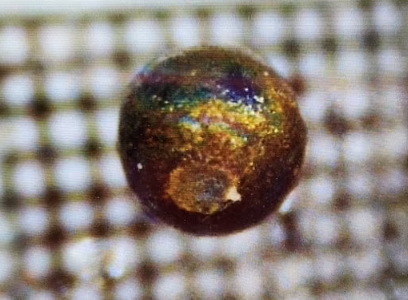Loeb: Are fragments of interstellar meteor from alien gadget?
- Astrophysicist Avi Loeb found interstellar spherules on the ocean floor
- The fragments of the meteor could be from alien technology
- Further testing is being done on the samples
(NewsNation) — Nearly a decade ago, a meteor traveling faster than 95% of nearby stars crashed into the Pacific Ocean. There’s a possibility it may not have been a space rock at all.
Harvard University astrophysicist Avi Loeb just returned from an excursion to the Pacific Ocean and recovered pieces of that meteor. He says it could possibly be the remains of a “technological gadget” from another solar system.
The 50 tiny spherules, or molten droplets, are believed to be made up of steel-titanium alloy that is stronger than the iron found in regular meteors. That, along with the meteor’s speed, has Loeb and other researchers sure of one thing: it’s not from this solar system.

“It’s the first time that humans are holding in their hands material from a big object that came from interstellar space,” Loeb said Wednesday on “CUOMO” while showing a vial containing one of the spherules.
Loeb and his team recovered the molten droplets in the ocean off the coast of Papua New Guinea, where they determined the meteor, IM1, crashed in 2014. The Defense Department confirmed to NASA in 2022 that the velocity of the meteor does “indicate an interstellar trajectory.”
Setting out to find fragments of the object, Loeb’s team in June dredged the ocean floor with a magnet sled that picked up mostly volcanic ash.
About a week into the expedition, the researchers found the “metallic marbles,” as Loeb described them, buried inside the ash. The spherules are less than a millimeter in size.
“We found them concentrated along the path of the meteor, and moreover, the composition may be completely different from solar system objects,” Loeb said. “We are planning to use electron microscopes to also image them and examine what kind of isotopes they contain, like radioactive isotopes.”
Loeb leads Harvard University’s Galileo Project, established to search for signs of UFOs and other interstellar objects. The latest expedition to the Pacific Ocean cost $1.5 million and resulted in a discovery that “opens a new frontier in astronomy,” Loeb said in a a Medium blog post.
The samples will undergo further testing at Harvard to determine exactly what they are made of.
“Either it’s a rock that was made in an environment very different than the solar system because the material strength was tougher than all space rocks, including iron meteorites,” Loeb said. “But it’s also possible that it was some kind of an technological gadget. Just think of (NASA’s) Voyager (spacecraft) in a billion years colliding with an exoplanet and burning up in the atmosphere of that planet — it would appear as a meteor.”
Loeb’s discovery comes on the heels of a whistleblower’s claim that the U.S. government is shielding information about a UFO retrieval program. Congress is investigating the matter, and Sen. Marco Rubio, R-Fla., said the whistleblower, former intelligence officer David Grusch, is not the only person to have made such claims.
Now that he’s found the tiny fragments, Loeb is hoping he might retrieve a craft himself, if there’s any large debris from the meteor crash.
“If there is any big relic, we know where it should be located,” Loeb said. “We are thinking about the next expedition, where we will scan the ocean floor with sonar and potentially find the core of this object, and then it will be easy to tell whether it’s a rock or a technological gadget.”









